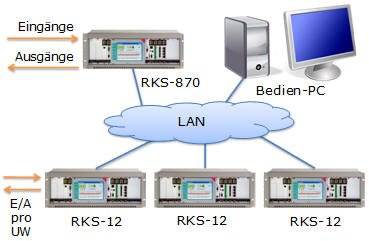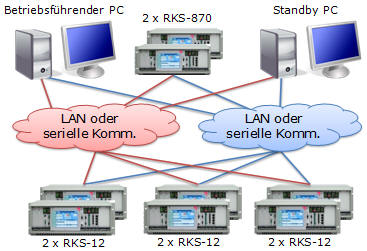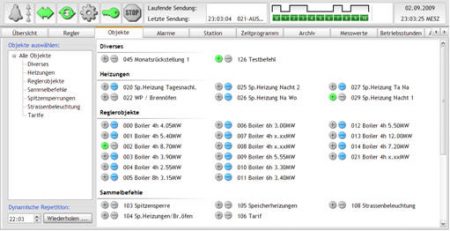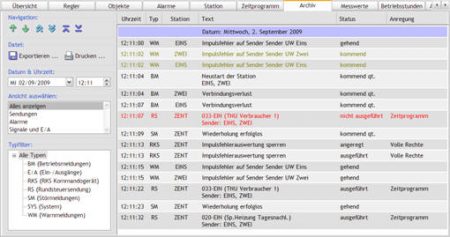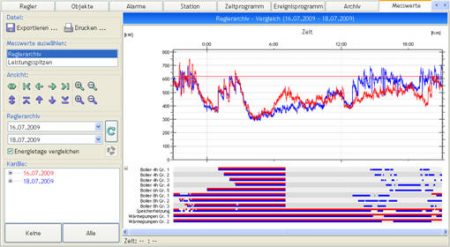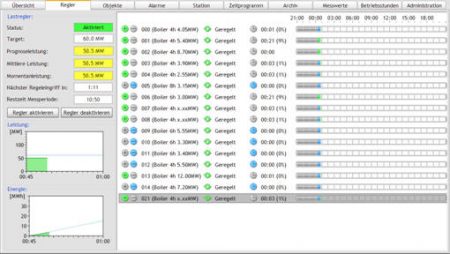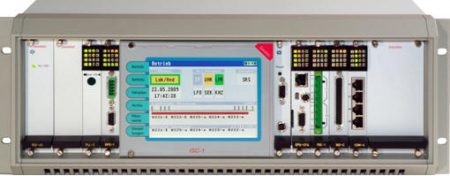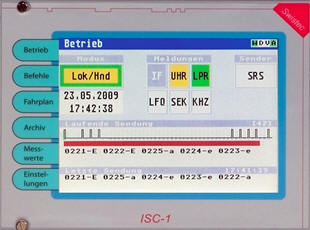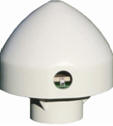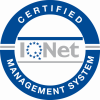RKS System – Seamless Flexibility and Scalability
Open System Architecture
The RKS system can be adapted to any possible customer requirements. It can be configured either as a centralised system, with a stand-alone controller, or as a decentralised system, with a central controller controlling a number of local controllers. In addition, combinations of these configurations are also possible.
The following figures explain these configurations in detail.
It should be noted that when changing from one configuration to the other, no hardware changes are required: simply an upgrade to the firmware in the controllers is necessary. Licensing costs may differ however.
Modern Communication
In general, RKS control units can be networked via a local area network (LAN). In this case, communication takes place via an Ethernet connection, in accordance with TCP/IP, and uses either copper cables, fibre-optic cables or WLAN.
The LAN allows for:
- Networking of multiple workstations in the control centre. Depending on the access rights, each workstation can be used either for parameterisation or operation.
- Data export to other systems (e.g. export of working hours to MS-EXCEL™ via an office-LAN).
Naturally, RKS control units can also be connected via conventional communication infrastructure such as V24 interfaces or a permanent cable connection.
Centralised Control (Stand-alone Controller)
The RKS-16 central controller autonomously controls the operation of the ripple control system, independently of its connection with the PC. It can be operated from the PC or, optionally, via the built-in LCD touch screen. Parameterisation and setting of protocols takes place via the PC. The central controller can control up to 128 sets of injection equipment by means of direct impulse telegram transmission.
It is also possible to operate and parameterise multiple RKS-16 central controllers from a single PC. This is particularly useful when the time programs for all RKS-16 central controllers are identical, but when individual load controllers are used for each RKS-16.
Decentralised Control System
In a decentralised architecture the RKS-870 central controller takes over responsibility for system control and coordination of the RKS-12 local controllers. In case of a communication loss, the local RKS-12 controllers automatically take over control of the injection equipment.
The system can optionally also be operated without a central gateway. The RKS-870 central controller has the advantage that it is a robust hardware solution, specially designed for ripple control applications. The PC is always used for the operation, parameterisation and setting of protocols.
The RKS-870 system offers a special advantage since it can accommodate mixed systems. This is especially useful for transition phases, as the central controller can also control ripple control injection equipment units using the direct impulsing control method.
When using an automatic load controller, power measurement values from the various RKS-12 local controllers can be summated in the central controller.




